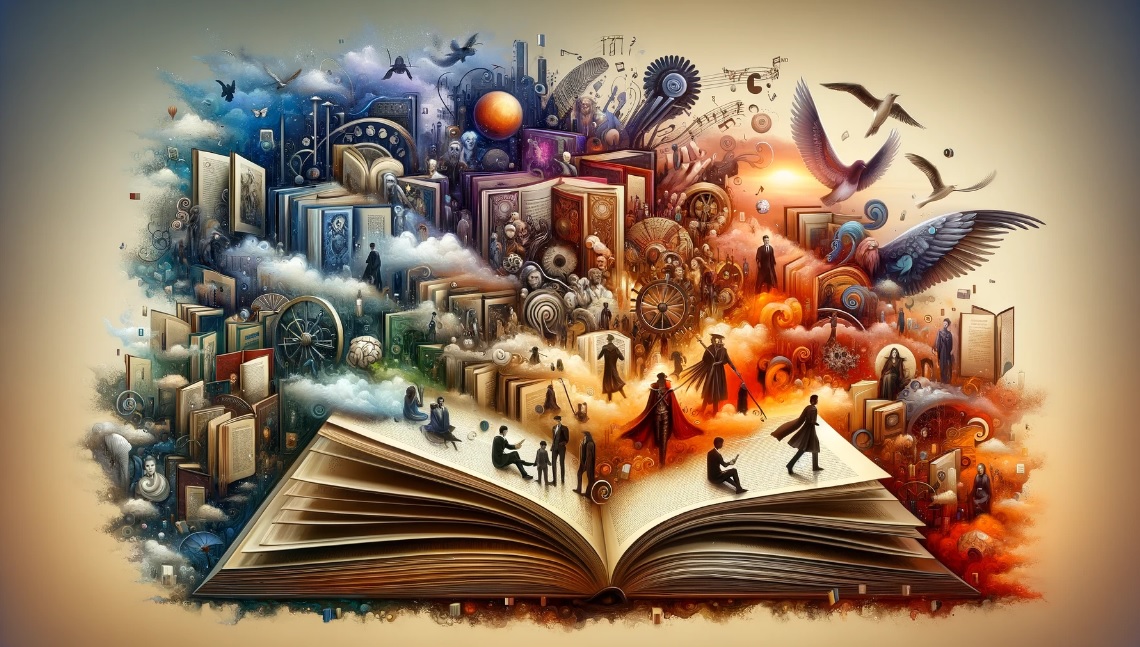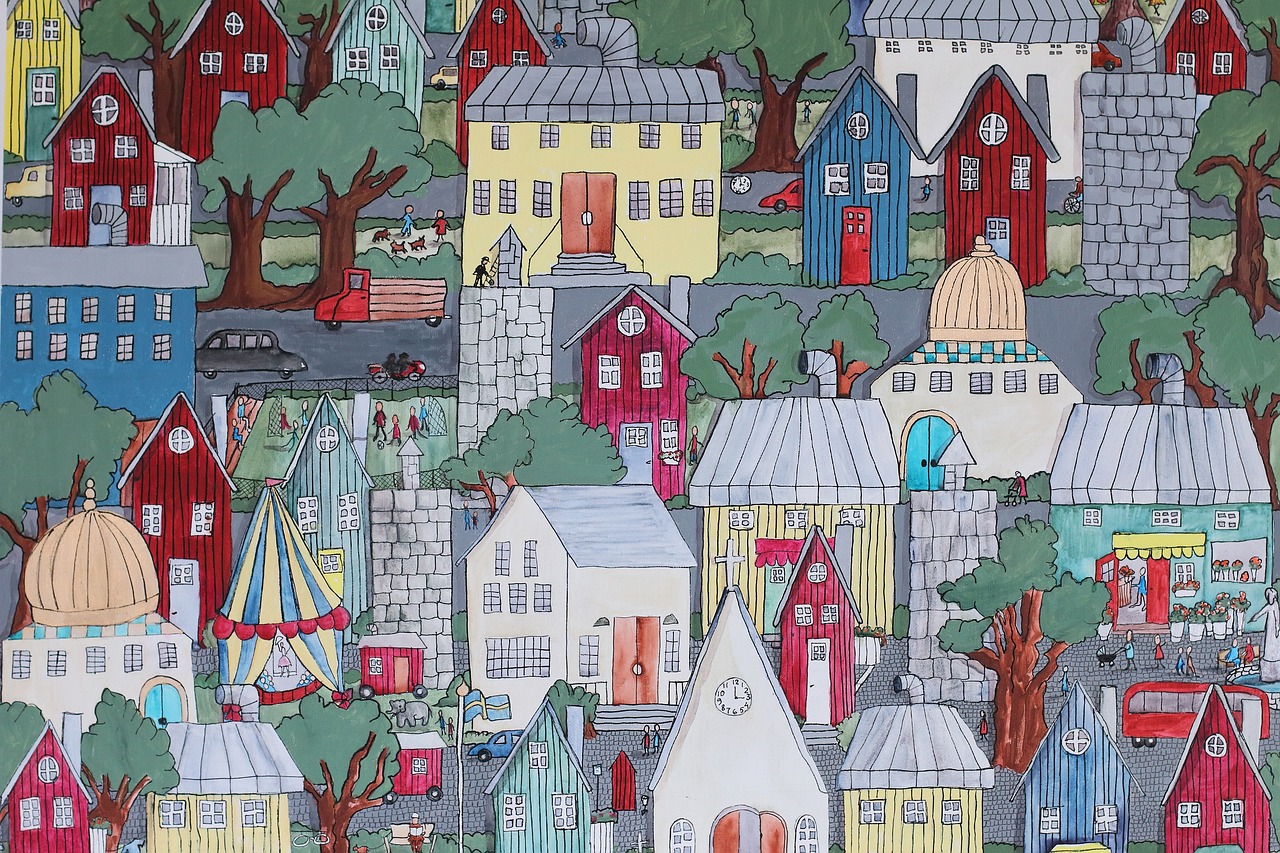Understanding Point-of-View in Literature
Point-of-view (POV) in literature refers to the perspective from which a story is narrated. It determines who is telling the story and how much information is available to the reader about the characters’ thoughts, feelings, and backstory.
Point-of-view (POV) shapes our understanding of the story by controlling the depth and breadth of information available to us. An author selects a point-of-view to present characters, plot, and setting in a way that aligns with their storytelling goals. POV directly influences the reader’s connection with the narrative, dictating how closely we walk in the characters’ shoes, how much we know about the unfolding events, and how we perceive the world the author has created.

Understanding different points-of-view is crucial for both readers and writers. For readers, it enhances comprehension and appreciation of the narrative’s nuances. For writers, it’s a fundamental aspect of crafting a story, as it affects how they relay information and develop characters and plot. The various types of narrative perspectives—first-person, second-person, third-person limited, third-person omniscient, and multiple points of view—each offer unique opportunities and challenges in storytelling.
First-Person Point-of-View
The story is told from the perspective of a character within the story, using “I” or “we.” This POV provides a direct insight into the narrator’s thoughts and experiences, providing a personal and subjective account of events. This immediacy allows readers to delve deeply into the narrator’s thoughts and feelings, fostering a strong emotional connection. However, this intimacy also limits the narrative to the protagonist’s experiences and perceptions, potentially leaving other characters and broader plot developments less explored.
Here is an example of first-person POV: Last night, I dreamed I was flying above the city, the lights twinkling like stars beneath me.
First-person narratives can vividly portray character emotions and internal conflicts, making them particularly effective for character-driven stories. However, this perspective restricts the narrative to what the narrator knows or observes, challenging authors to reveal plot and setting details organically through the narrator’s experiences.
Genres with Examples of First-Person POV:
- Autobiographies and Memoirs: In these non-fiction genres, first-person POV is used to tell personal life stories. Examples include “The Diary of a Young Girl” by Anne Frank and “Becoming” by Michelle Obama.
- Young Adult (YA) and Coming-of-Age Fiction: This genre often employs first-person POV to effectively convey the personal journeys of young protagonists. Examples include “The Catcher in the Rye” by J.D. Salinger and “The Fault in Our Stars” by John Green.
- Mystery and Detective Fiction: Often using first-person POV, this genre immerses readers in the investigative process. Examples include the Sherlock Holmes stories by Arthur Conan Doyle and “The Big Sleep” by Raymond Chandler.
- Romance Novels: Romance stories commonly use first-person POV to explore characters’ emotional experiences. Examples include “Pride and Prejudice” by Jane Austen (though it mixes third-person narrative) and “The Notebook” by Nicholas Sparks.
- Literary Fiction: This genre often favors first-person POV for its focus on character development and stylistic storytelling. Examples include “To Kill a Mockingbird” by Harper Lee and “The Great Gatsby” by F. Scott Fitzgerald.
- Horror and Psychological Thrillers: First-person POV in these genres amplifies fear and suspense. Examples include “Misery” by Stephen King and “Gone Girl” by Gillian Flynn.
In each genre, the first-person perspective creates a closer, more empathetic connection between the reader and the protagonist, enhancing the story’s immersive and emotional impact.
FREE RESOURCE
How to Self Publish Your Book: A Step-by-Step Guide for Self Publishing
Second-Person Point-of-View
Second-person narratives, identified by the use of “you,” are less common but offer a unique reading experience. This perspective directly addresses the reader, often creating an immersive and interactive atmosphere. It’s as if the reader is a character in the story, experiencing events firsthand. This point-of-view can be challenging to execute effectively, as it requires skill to maintain the reader’s engagement without feeling intrusive or gimmicky.
Here is an example of second-person POV: You turn the key in the lock, feeling a rush of excitement as the door creaks open.
In literature, the second-person perspective is often used to evoke a deep sense of empathy or to blur the lines between reader and character. While it’s rare in traditional narratives, it’s more common in experimental and avant-garde works. The use of “you” can also make the setting and plot feel more immediate and personal.
Genres with Examples of Second-Person POV:
- Choose-Your-Own-Adventure Books: This genre employs second-person POV to engage the reader as a participant in the story. A famous example is the “Choose Your Own Adventure” series by R.A. Montgomery.
- Experimental Literary Fiction: Second-person POV is used here to create unique narrative experiences. Notable examples include “Bright Lights, Big City” by Jay McInerney and “Half Asleep in Frog Pajamas” by Tom Robbins. Another example is “The Wars” by Timothy Findley, which intermittently uses second-person narration.
- Self-Help and Motivational Books: These genres often use second-person POV to directly address and engage the reader. Examples include “You Are a Badass” by Jen Sincero and “The 7 Habits of Highly Effective People” by Stephen R. Covey. Also, “The Best Laid Plans” by Terry Fallis, while fictional, incorporates motivational elements in a second-person narrative style.
- Poetry and Short Stories: Second-person POV in these forms can create an intimate connection with the reader. Author Margaret Atwood often uses second-person in her poetry, and author Alice Munro, has employed this perspective in her short stories.
- Psychological Thrillers and Horror: In these genres, second-person POV can intensify the emotional impact and suspense. “The Night Circus” by Erin Morgenstern is an example, and “Station Eleven” by Emily St. John Mandel uses this POV effectively in certain sections.
In each genre, the second-person perspective is used to forge a more direct and engaging experience for the reader, creating a sense of involvement in the narrative.
Third-Person Limited Point-of-View
In third-person limited POV, the narrator tells the story from the perspective of one character, using “he,” “she,” or “they.” The reader is privy to this character’s thoughts and experiences, but not those of others.
Here is an example of third-person limited POV: She watched the sunset, feeling a sense of peace as the sky turned shades of orange and pink.
In this perspective, authors can intricately explore their characters’ development and how they interact with the plot and setting. However, the limited scope means that some external events and motivations of other characters can remain mysterious or be revealed gradually, adding an element of suspense or surprise.
Genres with Examples of Third-Person Limited POV:
- Contemporary Fiction: This genre often employs third-person limited POV to provide a deep, personal insight into characters while maintaining a broader narrative scope. Examples include “Normal People” by Sally Rooney and “The Orenda” by Joseph Boyden.
- Mystery and Crime Fiction: This perspective is ideal for slowly unraveling mysteries from the viewpoint of a specific character, often a detective or central figure. Examples include “Gone Girl” by Gillian Flynn and “Still Life” by Louise Penny.
- Historical Fiction: Third-person limited POV allows readers to closely follow characters navigating the past, providing a personal touch to historical events. Examples include “The Book Thief” by Markus Zusak and “The English Patient” by Michael Ondaatje.
- Fantasy and Science Fiction: These genres use third-person limited to explore fantastical worlds through the experiences of key characters, balancing world-building with character development. Examples include “A Game of Thrones” by George R.R. Martin and “Dune” by Frank Herbert.
Third-Person Omniscient Point-of-View
The third-person omniscient perspective provides a god-like view of the narrative world. The narrator knows everything about the characters, plot, and setting, moving freely through time, space, and the minds of all characters. This all-knowing viewpoint allows authors to present a comprehensive view of the narrative, weaving intricate plots and exploring the inner workings of multiple characters.
Here is an example of third-person omniscient POV: The city bustled with life; John rushed to his meeting, unaware of the surprise awaiting him at the office, while across town, Sarah smiled knowingly, holding the letter that would change everything.
While offering vast narrative possibilities, this perspective can also pose challenges. Balancing the omniscient insights without overwhelming the reader or diluting character voices is key. Skillful use of this perspective can create a richly layered narrative, but it requires careful pacing and strategic revelations to maintain suspense and engagement.
Genres with Examples of Third-Person Omniscient POV:
- Classic Literature: This genre often employs third-person omniscient POV to provide a comprehensive view of the characters and their societal contexts. Examples include “War and Peace” by Leo Tolstoy and “Middlemarch” by George Eliot.
- Epic Fantasy: Third-person omniscient POV is ideal for epic fantasy, allowing for a broad view of complex worlds and a large cast of characters. Examples include “The Lord of the Rings” by J.R.R. Tolkien and “The Wheel of Time” series by Robert Jordan.
- Historical Fiction: This perspective is used to paint a vast canvas of historical events, seen through the eyes of multiple characters. Examples include “Wolf Hall” by Hilary Mantel and “A Tale of Two Cities” by Charles Dickens.
- Children’s Literature: This POV is used in children’s literature to narrate stories in a way that is accessible and engaging for young readers. Examples include “Charlotte’s Web” by E.B. White and “The Chronicles of Narnia” series by C.S. Lewis.
- Satire and Social Commentary: Satirical works often use third-person omniscient POV to offer a critical overview of societal norms and behaviors. Examples include “Pride and Prejudice” by Jane Austen and “Catch-22” by Joseph Heller.
In each of these genres, the third-person omniscient perspective provides a god-like insight into the story, allowing authors to present a multifaceted view of their narrative worlds and a deep exploration of a wide range of characters.
Multiple Points of View
Utilizing multiple points of view involves shifting between different characters’ perspectives, either within a chapter or across separate chapters. This approach can provide a multifaceted view of the story, allowing readers to understand events and characters from diverse angles. It can enrich the plot, deepen the setting’s portrayal, and offer varied emotional experiences.
However, managing multiple viewpoints demands meticulous planning to ensure clarity and coherence. Each character’s voice must be distinct, and transitions between perspectives should be smooth and purposeful. This technique can brilliantly showcase the complexity of the narrative world, but it requires skill to maintain a unified and compelling story.
Genres with Examples of Multiple POV:
- Contemporary Fiction: Multiple POVs offer varied perspectives on modern life and relationships. Examples include “Little Fires Everywhere” by Celeste Ng and “A Visit from the Goon Squad” by Jennifer Egan.
- Epic Fantasy: This genre uses multiple POVs to explore vast worlds and complex character arcs. Examples include “A Song of Ice and Fire” series by George R.R. Martin and “Malazan Book of the Fallen” series by Steven Erikson.
- Historical Fiction: Multiple POVs allow for a comprehensive view of historical events from different perspectives. Examples include “The Nightingale” by Kristin Hannah and “All the Light We Cannot See” by Anthony Doerr.
In each of these genres, multiple POVs provide a rich, layered narrative, allowing readers to understand the story from diverse angles and deepening the portrayal of the setting and plot.
The Power of POV in Storytelling
Point-of-view is a fundamental aspect of storytelling, deeply influencing how plot, character, and setting are conveyed and perceived. Each perspective offers unique advantages and challenges, shaping the reader’s experience and the narrative’s impact. Understanding these different viewpoints is key to both appreciating literature and mastering the art of writing. Whether an intimate first-person account or a sprawling third-person omniscient narrative, the chosen point-of-view can transform the way a story is told and experienced.
Meanwhile, at Dreamers…
2024 Micro Nonfiction Story Writing Contest Results

Congratulations to the winners of the 2024 Dreamers Micro Nonfiction Story Writing Contest, for nonfiction stories between 100-300 words.
2024 Place and Home Contest Results

Congratulations to the winners of the Dreamers 2024 Place and Home Contest, based on the theme of migration, place & home.